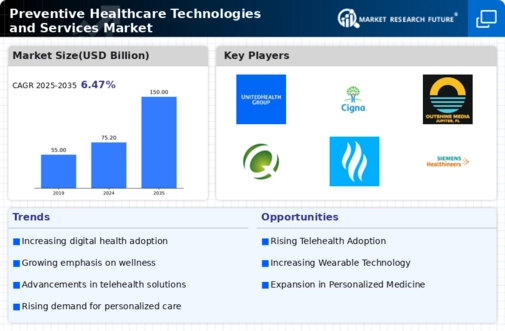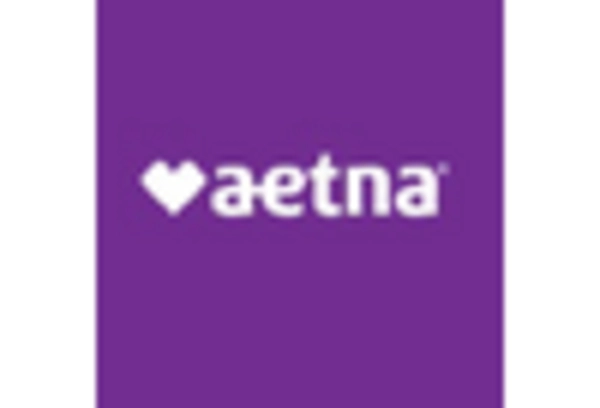Telehealth Expansion
The Preventive Healthcare Technologies and Services Market is witnessing a significant expansion in telehealth services. Telehealth offers patients remote access to healthcare professionals, which is particularly beneficial for preventive care. Recent statistics indicate that telehealth utilization has increased by over 50% in the past year, reflecting a shift in patient preferences towards virtual consultations. This trend is likely to continue as healthcare providers increasingly adopt telehealth platforms to enhance service delivery. Telehealth not only improves access to preventive services but also reduces travel-related barriers for patients. Consequently, the integration of telehealth into preventive healthcare strategies is expected to play a crucial role in improving health outcomes and increasing the efficiency of healthcare delivery.
Growing Focus on Preventive Care
The Preventive Healthcare Technologies and Services Market is experiencing a paradigm shift towards preventive care. This shift is largely driven by rising healthcare costs and the increasing prevalence of chronic diseases. Data suggests that preventive care can reduce healthcare expenditures by up to 30% by minimizing the need for more expensive treatments. As a result, healthcare systems are prioritizing preventive measures, such as screenings and vaccinations, to improve population health. This focus on prevention is fostering the development of innovative technologies and services aimed at early detection and intervention. Consequently, the demand for preventive healthcare solutions is expected to rise, creating new opportunities within the market.
Advancements in Wearable Technology
The Preventive Healthcare Technologies and Services Market is experiencing a notable surge in the adoption of wearable devices. These devices, which include smartwatches and fitness trackers, enable continuous health monitoring and data collection. According to recent data, the wearable technology segment is projected to grow at a compound annual growth rate of approximately 25% over the next five years. This growth is driven by increasing consumer awareness regarding health and fitness, as well as the convenience offered by these devices. Wearables facilitate early detection of health issues, thereby reducing the burden on healthcare systems. As a result, the integration of wearable technology into preventive healthcare strategies is becoming increasingly prevalent, enhancing patient engagement and promoting proactive health management.
Integration of Health Data Analytics
The Preventive Healthcare Technologies and Services Market is increasingly leveraging health data analytics to enhance preventive care strategies. The ability to analyze large datasets allows healthcare providers to identify trends, predict health risks, and tailor interventions accordingly. Recent studies indicate that organizations utilizing data analytics in preventive care can improve patient outcomes by up to 20%. This integration not only facilitates personalized care but also enhances the efficiency of healthcare delivery. As healthcare systems continue to adopt data-driven approaches, the demand for advanced analytics tools and services is likely to grow, further propelling the preventive healthcare market.
Regulatory Support for Preventive Services
The Preventive Healthcare Technologies and Services Market is benefiting from increased regulatory support aimed at promoting preventive services. Governments and health organizations are implementing policies that incentivize preventive care, such as funding for screenings and wellness programs. Recent legislative measures have expanded coverage for preventive services, making them more accessible to the population. This regulatory environment encourages healthcare providers to adopt preventive technologies and services, thereby fostering innovation within the market. As a result, the alignment of regulatory frameworks with preventive healthcare objectives is expected to drive market growth and enhance the overall effectiveness of healthcare systems.


















Leave a Comment